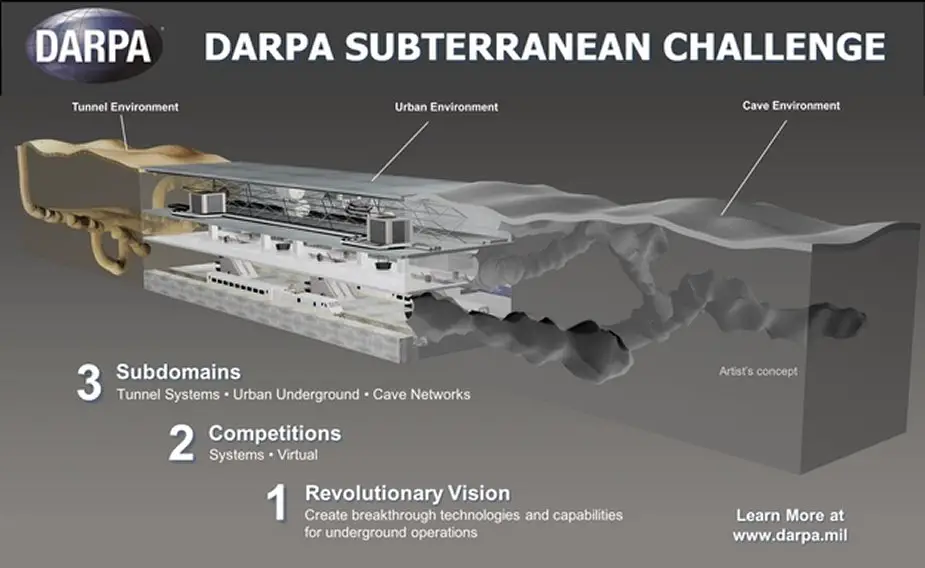Breaking news
Teams complete U.S. DARPA SuBT challenge Virtual Tunnel Circuit.
With 50 total points, Coordinated Robotics finished in first place in the United States Defense Advanced Research Projects Agency's (DARPA) Subterranean (SubT) Challenge Virtual Tunnel Circuit event, and as the top self-funded team, earned $250,000. Eight teams developed, tested and submitted their software-based solutions for simulation-based evaluation on the SubT Virtual Testbed.

Subterranean (SubT) Challenge Virtual Tunnel Circuit (Picture source: DARPA)
DARPA-funded and self-funded teams compete side-by-side throughout the Subterranean Challenge. Only self-funded teams are eligible for prizes in the Circuit Events, but they must finish in the top five overall. All qualified teams are eligible for prizes in the Final Event.
Bayesian Adaptive Robot Control System (BARCS) took second place. SODIUM-24 Robotics came in third, and as a self-funded team, earned the $150,000 prize. Robotika finished fourth, and as a self-funded team, earned the $100,000 prize. Communication Optimized, Low Latency Exploration, Map-Building and Object Localization Autonomy (COLLEMBOLA) rounded out the top five.
The Virtual Tunnel Circuit competitors developed advanced software for their respective teams of virtual aerial and wheeled robots to explore tunnel environments, with the goal of finding various artifacts hidden throughout the virtual environment and reporting their locations and types to within a five-meter radius during each 60-minute simulation run. Identical to the rules of the SubT Challenge Systems competition, a correct report is worth one point and competitors win by accruing the most points across multiple, diverse simulated environments.
The DARPA Subterranean Challenge seeks to better equip warfighters and first responders to explore human-made tunnel systems, urban underground, and natural cave networks, while decreasing risk to human lives. The SubT Challenge Systems and Virtual competitions aim to create a community of multidisciplinary teams from wide-ranging fields to foster breakthrough technologies in autonomy, perception, networking, and mobility for underground environments.
Researchers, engineers, roboticists, and robot enthusiasts inspired by the Tunnel Circuit still have time to apply to compete in either or both of the Urban Circuit Systems and Virtual competitions, which will take place in February 2020. The qualification deadline for the Systems Urban Circuit is Dec. 3, with a deadline of Jan, 3, 2020, for the Virtual competition. Qualification requirements and competition rules can be found on the Resources tab of the Subterranean Challenge website.
The Cave Circuit will take place in August 2020. The Final Event incorporating all three subdomains will be in August 2021.


























